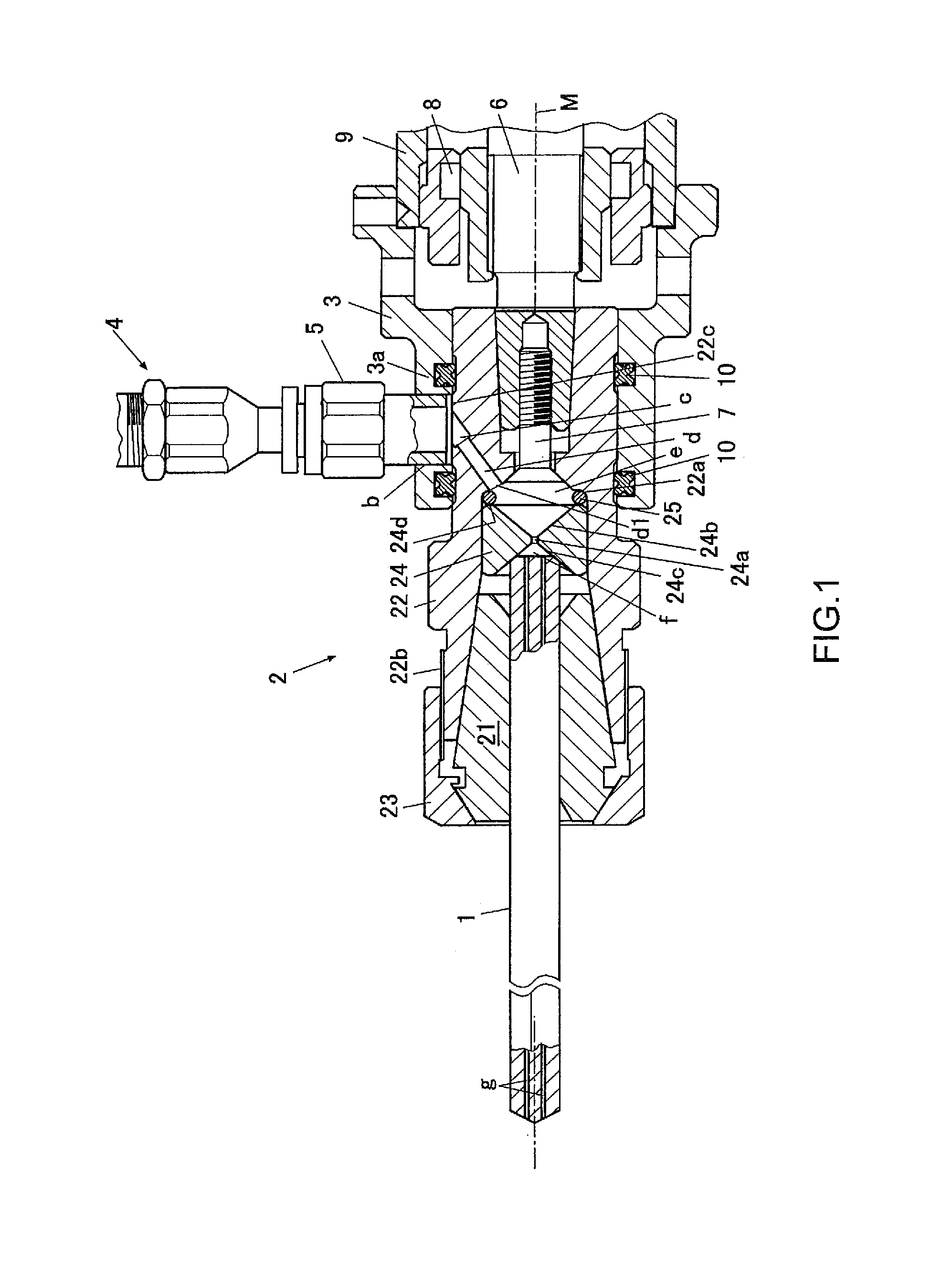Rotary cutter
a rotary cutter and cutter body technology, applied in the field of rotary cutters, can solve the problems of narrow application range, large centrifugal force effect on the fluid flowing inside the flow path, and inability to spray mist well
- Summary
- Abstract
- Description
- Claims
- Application Information
AI Technical Summary
Benefits of technology
Problems solved by technology
Method used
Image
Examples
Embodiment Construction
[0068]In the following, one embodiment of the present invention will be explained with reference to the accompanying drawings. The following is only one embodiment of the present invention, and does not limit the invention.
[0069]As illustrated in FIG. 1, FIG. 2 and FIG. 3, the rotary cutter of one embodiment of the present invention comprises a drill 1, a chuck 2, a cover 3, a supply pipe 4 and a connector 5 as a rotary cutting tool.
[0070]The chuck 2 is a collet chuck and comprises a collet 21, a collet holder 22, a collet nut 23, a throttle piece 24 and an O-ring 25.
[0071]The chuck 2 grips and holds the drill 1.
[0072]The collet holder 22 has a cylindrical shape with tapered surfaces on both ends such that the rear end of the collet holder 22 threadably mounts on the main rotating shaft 6, and the collet holder 22 and main rotating shaft 6 are fastened together by a flush bolt 4. This covers the opening on the rear end of the collet holder 22.
[0073]To further assemble, after the fas...
PUM
| Property | Measurement | Unit |
|---|---|---|
| opening angle 4θ | aaaaa | aaaaa |
| opening angle | aaaaa | aaaaa |
| air pressure | aaaaa | aaaaa |
Abstract
Description
Claims
Application Information
 Login to View More
Login to View More - R&D
- Intellectual Property
- Life Sciences
- Materials
- Tech Scout
- Unparalleled Data Quality
- Higher Quality Content
- 60% Fewer Hallucinations
Browse by: Latest US Patents, China's latest patents, Technical Efficacy Thesaurus, Application Domain, Technology Topic, Popular Technical Reports.
© 2025 PatSnap. All rights reserved.Legal|Privacy policy|Modern Slavery Act Transparency Statement|Sitemap|About US| Contact US: help@patsnap.com



